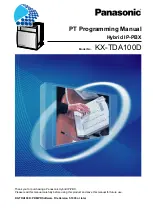
©
Copyright 1999 Osmonics, Inc.
Printed in the USA P/N 1017948 Rev. B
Disinfection of Water Conditioners
The materials of construction of the modern water
conditioner will not support bacterial growth nor will
these materials contaminate a water supply. However,
the normal conditions existing during shipping, storage
and installation indicate the advisability of disinfecting
a conditioner after installation, before the conditioner is
used to treat potable water. In addition, during normal
use, a conditioner may become fouled with organic
matter, or in some cases, with bacteria from the water
supply.
Thus every conditioner should be disinfected after
installation. Some will require periodic disinfection
during their normal life, and in a few cases disinfection
with every regeneration would be recommended.
Depending upon the conditions of use, the style of
conditioner, the type of ion exchange, and the
disinfectant available, a choice can be made among
the following methods.
Sodium or Calcium Hypochlorite
Application
These materials are satisfactory for use with
polystyrene resins, synthetic gel zeolite, greens and
bentonites.
5.25% Sodium Hypochlorite
These solutions are available under trade names such
as Clorox, Linco, Bo Peep, White Sail and Eagle Brand
Bleach. If stronger solutions are used, such as those
sold for commercial laundries, adjust the dosage
accordingly.
1. Dosage
a. Polystyrene resin; 1.2 fluid ounce per cubic
foot.
b. Non-resinous exchanger; 0.8 fluid ounce per
cubic foot.
2. Brine tank conditioners
a. Backwash the conditioner, and add the required
amount of hypochlorite solution to the brine
well of the brine tank. (The brine tank should
have water in it to permit the solution to be
carried into the conditioner.)
b. Proceed with the normal regeneration.
Calcium Hypochlorite
Calcium hypochlorite, 70% available chlorine, is
available in several forms including tablets and
granules. These solid materials may be used directly,
without dissolving before use.
1. Dosage
a. 2 grams (approximately 0.1 ounce) per cubic
foot.
2. Brine tank conditioners
a. Backwash the conditioner and add the required
amount of hypochlorite to the brine well of the
brine tank. (The brine tank should have water in
it to permit the chlorine solution to be carried
into the conditioner.)
b. Proceed with the normal regeneration.


























